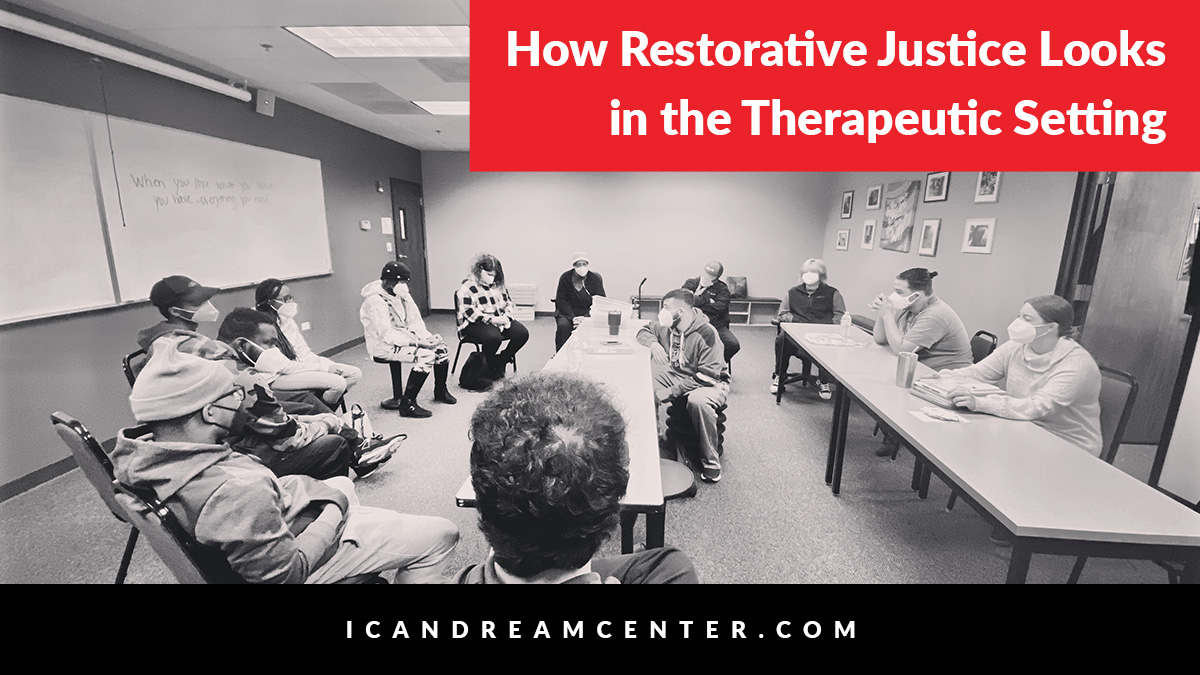
How Restorative Justice Looks in the Therapeutic Setting
Our students come to school with many issues on their minds and in their hearts. As educators, we can help them process their thoughts and feelings so they can better handle their situations and be more present in class.
Restorative Circles are a useful practice to do just that. While frequently used to replace punitive forms of discipline, restorative circles are equally important in proactively building the relationships and skills students need to support one another and collectively address the challenges they face.
Restorative Circles are most effective when they’re an integral part of school culture. After all, you can’t “restore” a community that you haven’t built or sustained.
Circle is a mainstay practice here at the Center!
7 STEPS FOR MEANINGFUL CIRCLES
- Cocreate a safe, supportive space: circles work best if teachers invest time up front to build relationships, skills, and practices to draw on throughout the school year—especially if the going gets tough.
Through classroom norms and circle, students explore values like empathy, patience, kindness, courage, and open-mindedness—that need to be respected for people to be willing to share openly and honestly in circle.
- Be prepared: Make sure that you, the circle facilitator, are well rested, calm, and focused.To hold the circle space effectively, it’s important to be fully present and able to sit with the stories of others. Center yourself. If you’re exploring sensitive issues that may require follow up, consider eliciting the assistance of your social worker.
- Plan: Decide together on a topic or theme that sustains students’ interest.Find a relevant opening ceremony to open the circle space, such as a quote, or piece of music. A mindfulness activity can also be used to bring students into the space after a particularly stressful class or noisy hallway experience.Look for information to ground the conversation and develop questions and prompts to invite student perspectives into the circle.
Keep in mind that the bigger the circle, the more time you’ll need for the talking piece to go around. Think about how things might unfold and be ready to adapt to what comes up.
Make sure to leave time for a closing ceremony, giving students a chance to transition into spaces that may be less conducive to being vulnerable. A closing ceremony can be a commitment to safeguarding the stories shared in circle, or a breathing exercise in which we provide students with prompts and time to put themselves back together again.
- Invite student experiences into the space: Encourage students to connect with the circle content by sharing stories from their own lives.Include storytelling rounds by asking students to talk about “a person in your life who…” or “a time when….” Share authentically of yourself. This gives others permission to do the same.
- Acknowledge, paraphrase, summarize, and practice empathy: Listen closely to what students share so that you can build on their experiences.If needed, let students know you’re available to check in with them later in the day or week. You might also have them consider speaking with other supportive adults or students to find solace if they’re troubled.
- Explore what it means to be an effective ally: Beyond creating a supportive listening environment, ask what else, if anything, students need from you and from each other.
Explore how to be better allies in circle so that students know they don’t need to face their challenges alone. Invite them to talk about a person in their lives who is a good friend or ally, or a person they’d like to be a better friend or ally. Discuss the qualities these people have (or lack) and how they make us feel. Invite students to talk about a time they’ve been a good friend or ally themselves, and what gets in the way of being our best selves with one another.
- Zoom out to promote understanding on the systems level: Explore whether there are larger systemic forces that underlie the challenges students have touched on (such as racism, sexism, or lack of access to resources). Introduce information, stories, and voices that might shed light on how these systems operate. Look for examples of people who took action to interrupt these and other oppressive systems.
Invite students to connect to this information by sharing their thoughts, feelings, and related experiences.
Studying larger, systemic forces in society can help students better understand their situation and can be a useful starting point for students to become more active themselves. Action and activism can inspire hope, connection, and healing.
